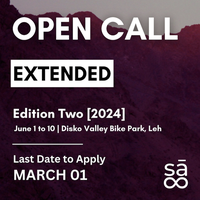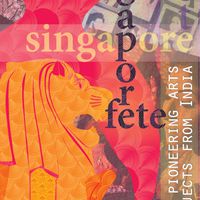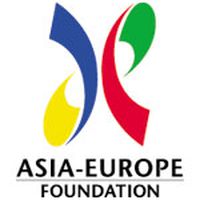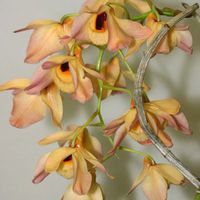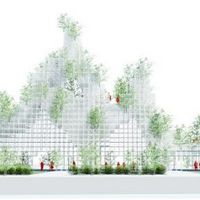Discovering sā: Asia's Highest Contemporary Land Art Exhibition

This month, culture360.ASEF.org's contributor David Fernandez travels to the city of Leh, in Ladakh (India). In this article, he highlights the peripheral yet pioneering contemporary art platform sā, an initiative for cultural exchange and community engagement with a focus on ecological practices and conservation efforts. Actively contributing to environmental sustainability, sā featured a selection of site-specific art installations, sculptures and performances, created to inspire action, raise awareness and ignite change for the planet.
Earlier this month, sā Ladakh celebrated the second edition of Asia’s highest contemporary land art festival, a multidisciplinary platform for reflecting and connecting ideas and discourses on culture, climate and community through contemporary arts at Disko Valley Bike Park, an isolated location perched picturesquely on the mountainsides of the city of Leh, in Northern India.
Nestled within the rugged terrains and breathtaking landscapes of Ladakh in the Indian Himalayas, sā is an immersive and thought-provoking public arts initiative, bringing together artists, creatives, organisations and communities from the Himalayan region, wider India and beyond.
sā, meaning ‘soil' in Ladakhi’s language, was initiated with the enthusiasm for landscapes, environment and communities and with a focus on engaging people from all walks of life – particularly young adults and the coming generations. The festival continues to inspire cross-cultural, multi-generational and multidisciplinary dialogue and exchange, appreciation and care for the natural world through ‘environmentally conscious art’.

1. Glacier's Retreat - Stanzin Tsepel © sā Ladakh
Environmental high-mindedness
Under the title ‘The Future of Immersive Land Art / Immersive Land Art and the Future’, this year’s programme showcased a stimulating blend of creativity, culture, and environmental consciousness. The outdoors exhibition took place from the 6th of June, while school and community workshops were carried out from 1st - 5th June.
The initiative was organised in association with Ladakh Arts and Media Organisation (LAMO), a non-profit platform working to create an alternative space for arts and media in Ladakh; Local Futures, a global non-profit organisation dedicated to renewing ecological and social well-being by strengthening communities and local economies; and The Crashpad, a community for rock climbing enthusiasts, with support from the European Union National Institutes of Culture (EUNIC) through its annual call Cluster Fund 2023, as well as other European cultural institutions based in India, plus the collaboration of Tsas by Dhokar, Dhoomimal Gallery and Gallery Espace as part of a cross-border dialogue.
“It is exciting to see the second edition of sā take place in Ladakh. This comes at a crucial time in the region, as dialogue around land and environment and its focus on community and culture is growing. Through sā, we bring into focus art practices from Ladakh and their relevance to this wider discussion.” - Monisha Ahmed, founder of the Ladakh Arts and Media Organisation (LAMO)
Building on the achievements of its inaugural edition in August 2023, sā programme raised the bar by offering new standards in immersive art experiences. With a thematic focus on “climate optimism,” the festival continued to spark meaningful dialogues and actions towards a sustainable future.
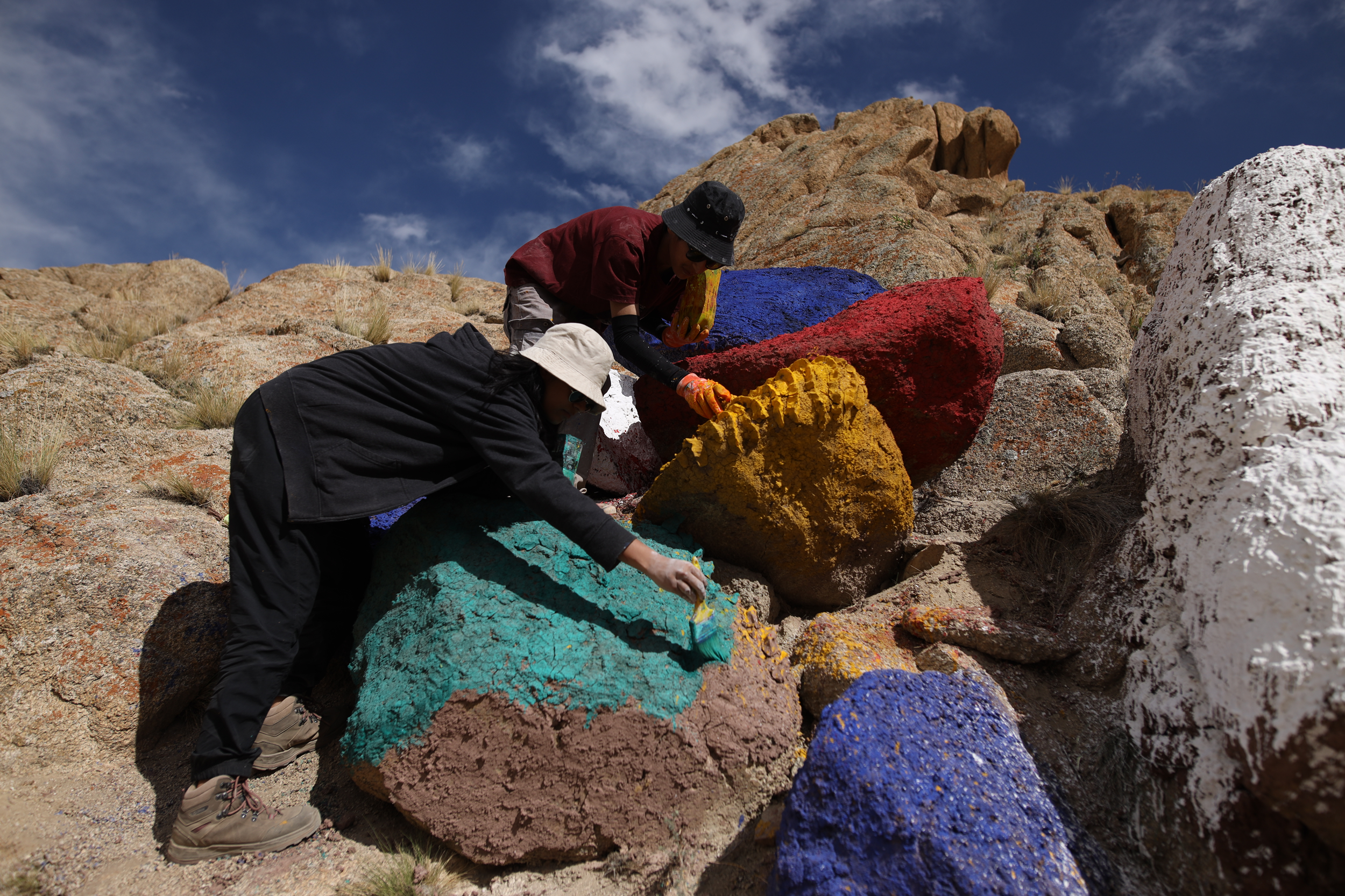
2. Jungwa 5 by Urging Zawa © sā Ladakh
The second edition of sā boasted an enriched variety of site-specific art installations and sculptures by a diverse array of multidisciplinary artists, both local and international, including Manisha Gera Baswani, Kunzes Angmo, Tsetan Angmo, Zarina Parveen, Kundan Gyatso, Stanzin Tsepel, Tsering Youdol, Urgain Zawa, Li Actuallee, Viola Borden, Doyel Joshi, Neil Ghose Basler, Omaggio Performing Company, Margherita Moscardini, Raghav and Ansh Kumar, Angelina Kumar, Ramon De Marco, Ikshit Pande, Jasmeet Dhillon, and Laurent Ziegler, who meticulously crafted from locally sourced discarded, renewable, or reusable materials.
Fostering cross-cultural exchange and community engagement
In addition to showcasing ground-breaking artworks across the stark scenario, the programme also featured engaging school outreach activities in rural villages and community workshops, exhibitions, curated artist film screenings, and immersive contemporary performances.
“To work at a height over 3,600m with so many thought-provoking artists and collaborators is really an uplifting experience in promoting dignity, environmental protection and dialogue. We are delighted to support sā in setting a new and innovative exhibition standard” - Michael Pal, President, EUNIC New Delhi.
Furthermore, in this edition, a unique collaboration with the Austrian public arts institution, museum in progress, added another international dimension to the showcase through their ‘raising flags’ series, an outdoor project curated by Alois Herrmann and Kaspar Mühlemann Hartl, consisting of a waving collection of flags created by renowned artists such Minerva Cuevas, Shilpa Gupta, Samson Kambalu, Agnieszka Kurant, Christian Robert-Tissot, Eva Schlegel, Grazia Toderi, and Erwin Wurm.
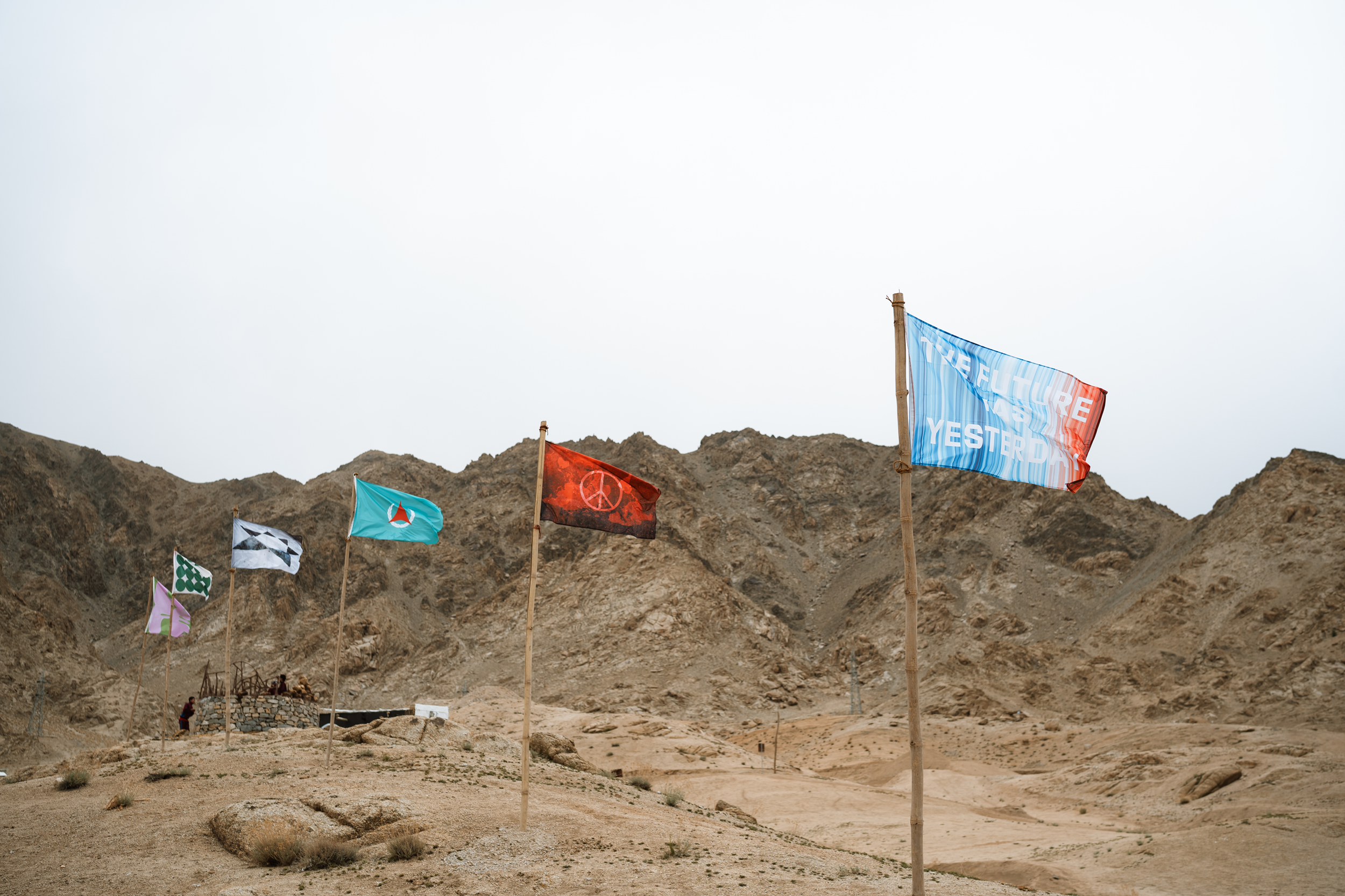
3. Raising Flags, Museum in Progress © sā Ladakh
Adding to the multifaceted lineup, Indian motorcycle manufacturing company Royal Enfield supported an artist residency at sā dedicated to sustainable textile art for the first time as part of its textile conservation project, 'The Himalayan Knot', an ongoing collaborative effort to bring together Himalayan communities, conservation specialists, craftspeople, and designers to conserve pastoral lands, safeguard the living heritage, and preserve local livelihoods.
Stark landscape, rich culture
Aligned with the pledge, this art residency encouraged collaboration between a textile artist and local practitioner, highlighting Ladakh’s rich fibre culture. The artist selected was Chennai-based Aditi Jain, who developed a collaborative artwork with the local Ladakhi textile artisans with the support of Lehvallée, a sustainable clothing studio established in Leh with a mission to empower women and support local community while creating timeless, functional textiles.
.png)
4. Open Weave by Aditi Jain (The Himalayan Knot) © sā Ladakh
Through these educational activities on preservation and conservation, as well as through the side events, exhibitions and performances, participants and visitors had the chance to immerse themselves in the local culture and learn about the fragile ecosystem of the Himalayas and the importance of preserving it for future generations.
“sā is an ongoing proof of concept, with an attempt to mindfully create art with the limited resources at hand, understanding the carrying capacity of a region, raising awareness on climate optimism, while providing value for the community, the next generation and widening a transboundary network and dialogue - we are continuously learning together.” - Raki Nikahetiya, co-founder of Sā Ladakh
To find out more about Sā Ladakh, please visit: https://www.saladakh.com/
About the Author
David Fernández is a Spanish-born contributing writer working in Asia-Pacific region for over a decade. Currently working as freelance arts & cultural project manager, producer and translator between Europe and Asia. He previously worked for the Spanish Agency for Cooperation and Development (AECID) as an arts administrator and as a cultural manager consultant for several international institutions and arts & culture platforms.
Similar content
deadline
01 Mar 2024
deadline
30 Apr 2011
from - to
29 Nov 2013 - 30 Nov 2013
posted on
17 Apr 2010
03 Jul 2017
from - to
03 Sep 2016 - 30 Jun 2017

